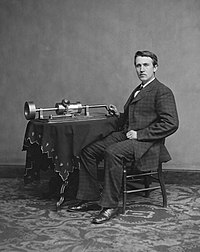
Photo from wikipedia
At the end of 2020, when China’s three-year Blue Sky Protection Campaign was successfully concluded, the main pollutants, led by O3, increased instead of decreasing, creating a new air pollution… Click to show full abstract
At the end of 2020, when China’s three-year Blue Sky Protection Campaign was successfully concluded, the main pollutants, led by O3, increased instead of decreasing, creating a new air pollution problem. In this paper, the impact of the technological innovation level on O3 pollution and its inter-regional differences across three major regions from 2014 to 2019 are studied using the dynamic spatial Durbin model. Generally, in terms of ozone pollution showing significant spatial correlation, technological innovations in China are still not effective in curbing ozone pollution. Furthermore, technological innovation is a key factor affecting ozone pollution, and it is heterogeneous, demonstrating that the impact of technological innovation on O3 pollution is different among regions. Technological innovation in Beijing–Tianjin–Hebei significantly reduces local O3 pollution with spillover, while technological innovation in the Yangtze River Delta instead significantly exacerbates local O3 pollution, and the impact of technological innovation on O3 pollution in the Fenwei Plain is not significant. Third, other factors in O3 pollution also differ between regions, with the number of cars and the amount of foreign capital actually utilized being the main factors. Therefore, we should pay attention to the spillover of O3 pollution and technological innovation and strengthen regional cooperation according to our own characteristics to effectively suppress O3 pollution. Finally, the findings of this paper are representative, which provides a possible reference for other similar national or regional studies.
Journal Title: International Journal of Environmental Research and Public Health
Year Published: 2022
Link to full text (if available)
Share on Social Media: Sign Up to like & get
recommendations!